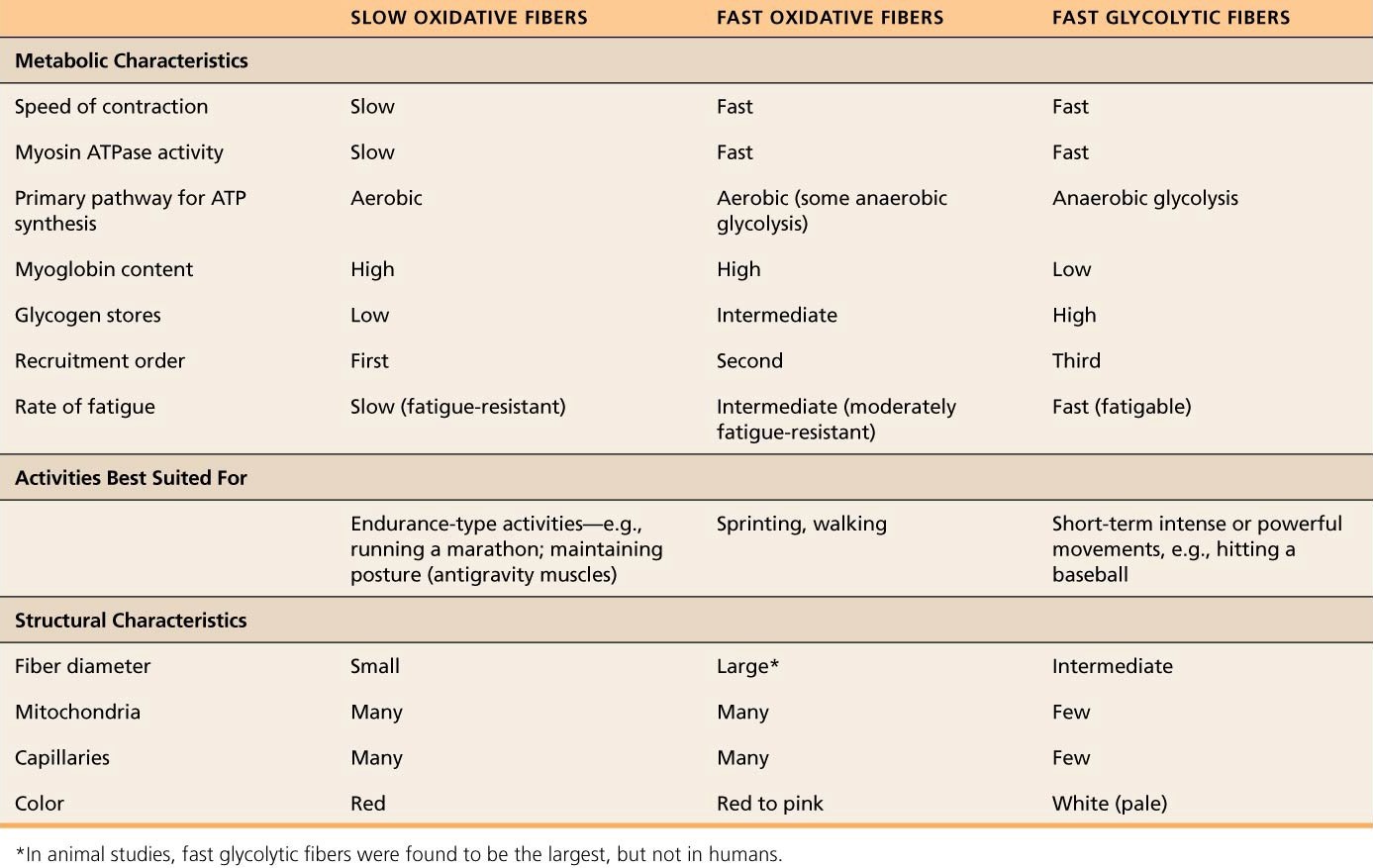The usual claim is that high reps build slow twitch muscle fibers and low reps build fast ones. However I feel this is not quite right, I believe that to build slow twitch muscle fibers one has to just increase the number of reps he does over time regardless of the initial number of reps he did and for fast twitch he just has to increase the weight over time regardless of the rep range. So I think it is just a matter of how someone chooses to progress and not about the rep ranges, sure someone trying to build endurance will end up using high reps, but what I am trying to say is that if he kept a specific rep range, say 15 reps, that wouldn't guarantee endurance progress since the number of reps would stay the same, what do you think?
1 Answer
You're not increasing the number of Type I Fibers with endurance training.
Essentially your body becomes more efficient in various ways i.e (increasing the number of mitochondria, increasing O2 delivery to muscle, delaying lactic acid onset etc)
Muscle Fiber Types
Skeletal muscle fibers can be classified into three types:
- Type I: Slow oxidative fibers
- Type IIa: Fast oxidative fibers
- Type IIx: Fast glycolytic fibers
- Resistance Training: Type IIx --> IIa
- Endurance Training: (Cardio or Low Weight High Rep) Adaptions Listed Below
Most muscles contain mixture of fiber types, resulting in a range of contractile speed and fatigue resistance
All fibers in one motor unit are the same type
Genetics dictate individual’s percentage of each
Training Effects on Muscle Fiber Type
Aerobic (Endurance) Exercise Such as jogging, swimming, biking leads to increased:
- Muscle capillaries
- Number of mitochondria
- Myoglobin synthesis
- Results in greater endurance, strength, and resistance to fatigue
- May convert fast glycolytic fibers into fast oxidative fibers
Resistance Exercise (Anaerobic), Such as weight lifting or isometric exercises, leads to increased
- Mitochondria
- Myofilaments
- Glycogen stores
- Connective tissue
- Muscle strength and Size (hypertrophy)
